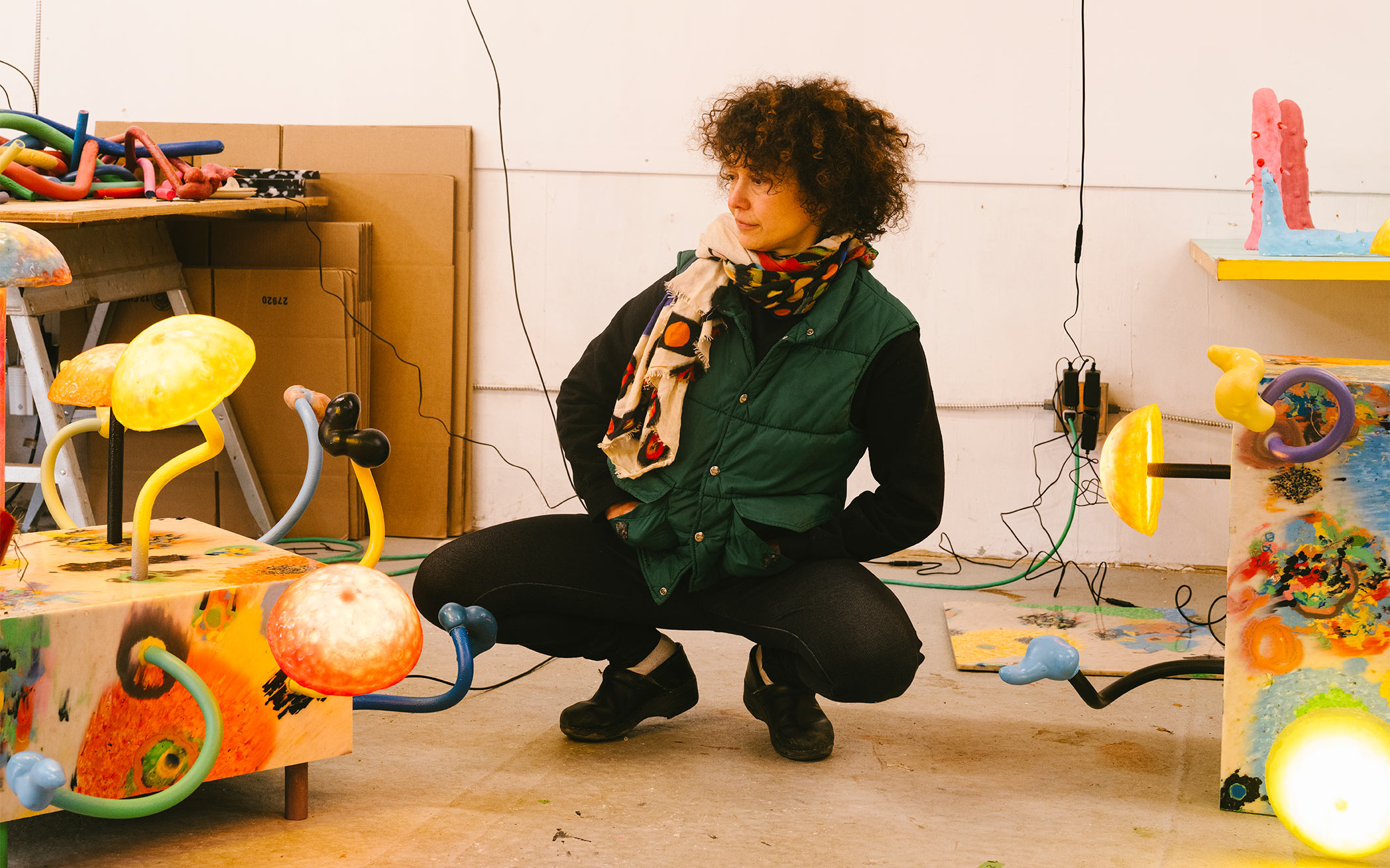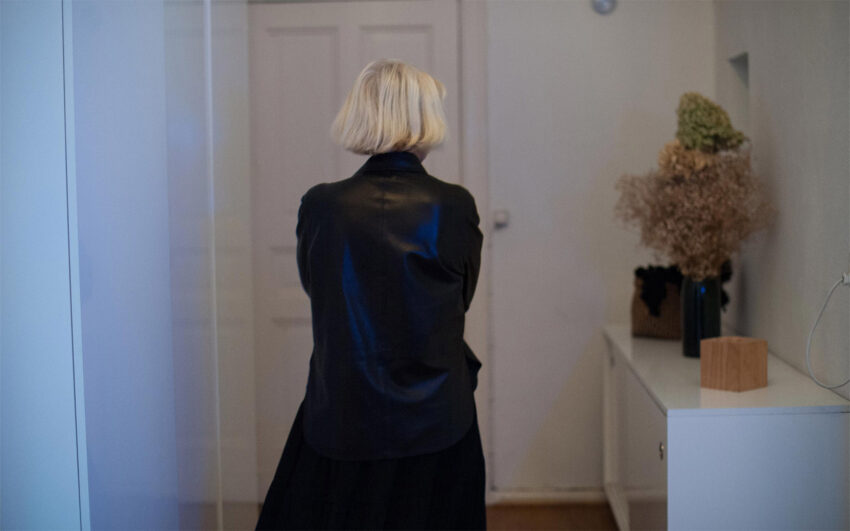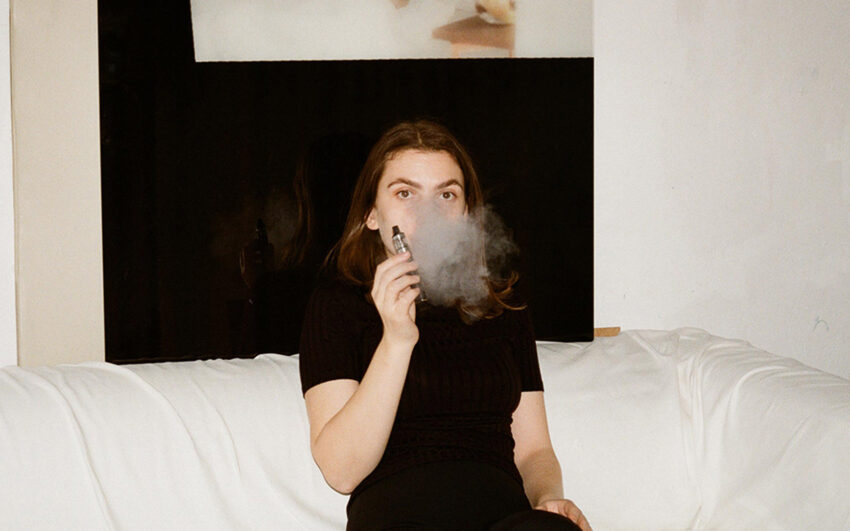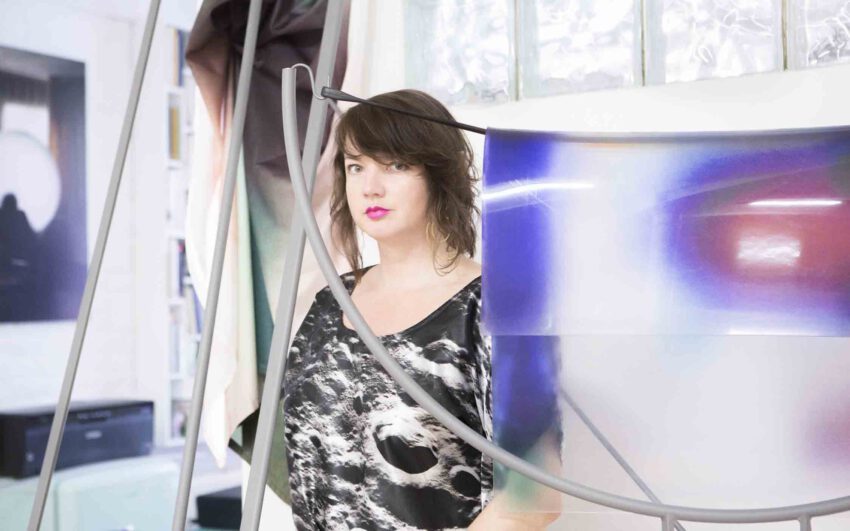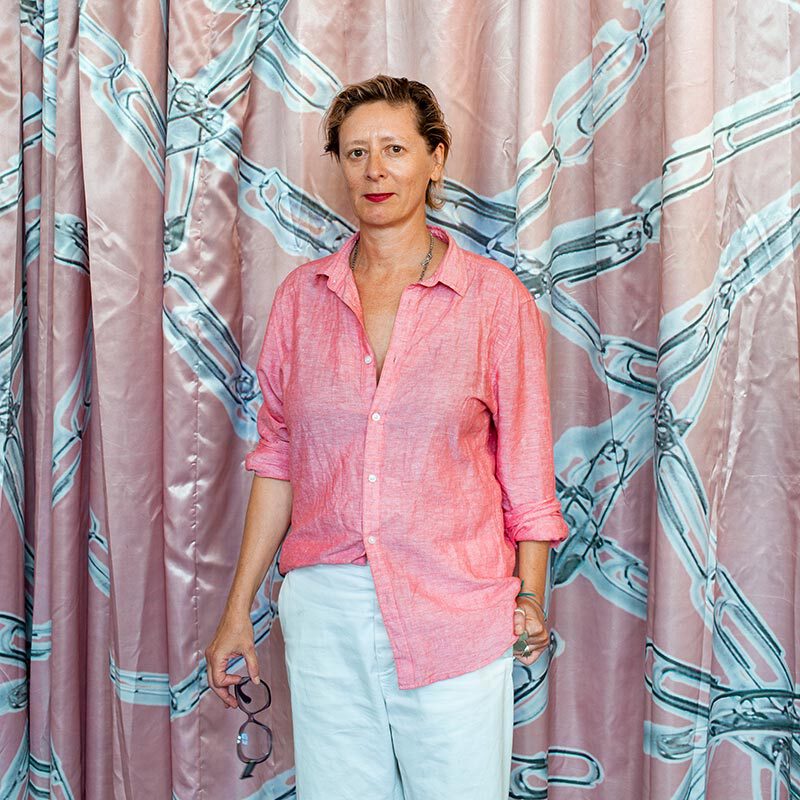Mika Rottenberg’s work is known for its ironic view on the absurdity of everyday global economic processes. It knits surreal, imaginative elements and social criticism about the exploitation of labour together, to create a fascinating fantasy world. As shiny and humorous as they might seem, her videos do point out the dark and the dissonance in a world that is getting more complex and difficult to navigate.
How did you become an artist?
I studied art at a very conceptual school. The education there was more about how to think about art than about how to produce it. It was a small art school in Israel that stood in a kind of Arte Povera tradition and practiced a rejection of anything that was too pretty or too shiny. My education was not about tradition, but about ways of looking and thinking.
Which is a great way to look at art! But how could you be confident that what you were producing at the end of the day really was art?
I didn’t think this was important at all! Now though, I sometimes wish I knew more technical things… But you know what: actually, I don’t.
Is it about learning by doing then?
Yes, I think this is the most important. You make something and through that, you learn.
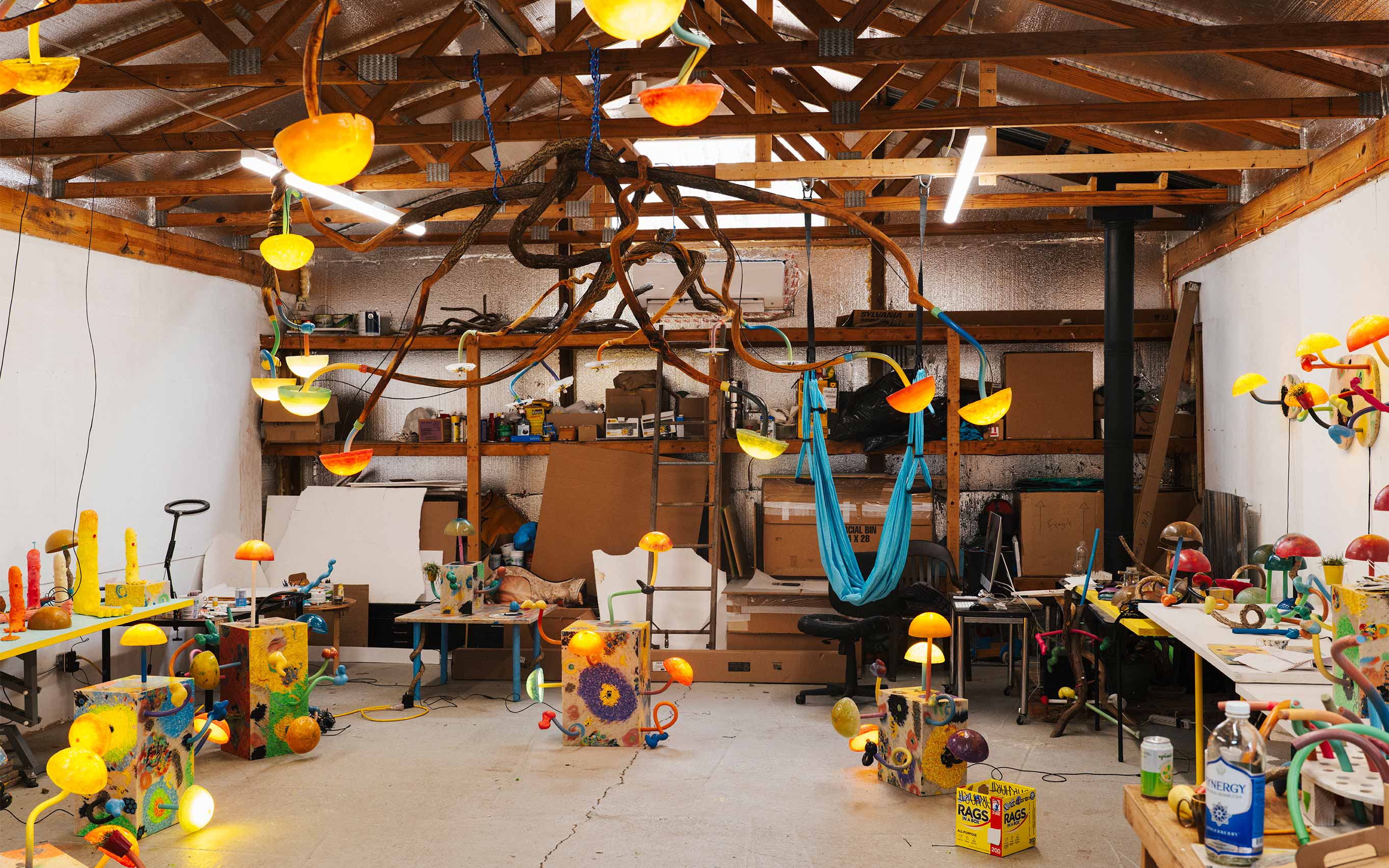
So you started out doing what?
At the beginning, I was painting, because that is the first thing you do.
Those paintings - you still have them?
I kept some (laughs)! But eventually, I wanted everything to move, so video made more sense. However, in the 1990s it was difficult to handle a video camera and to edit, unlike now. Still, I really liked the video, because it allows you to paint. You work with light and color, and video is conceptual, it moves in time, it is sculpture… I think it is my preferred medium.
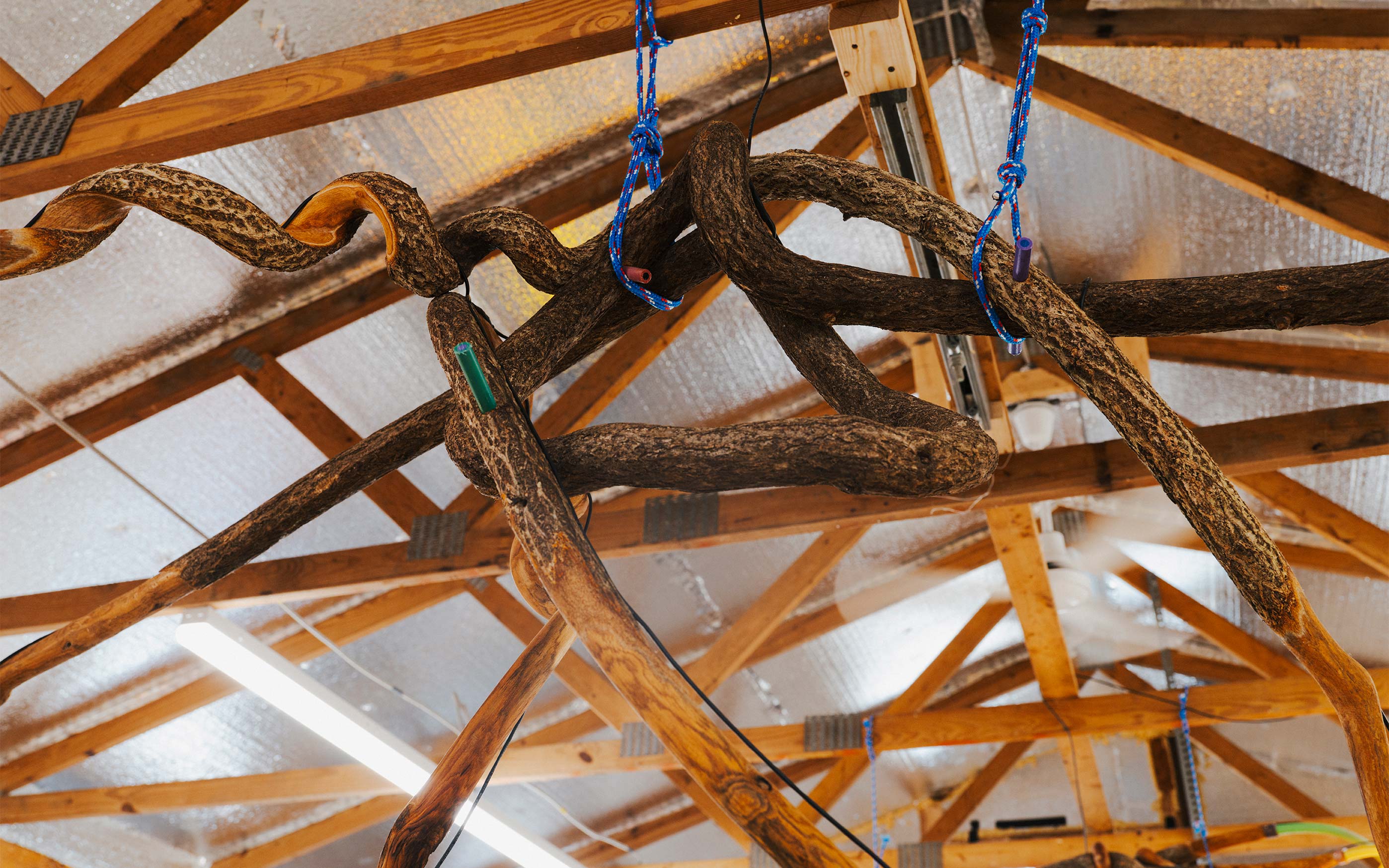
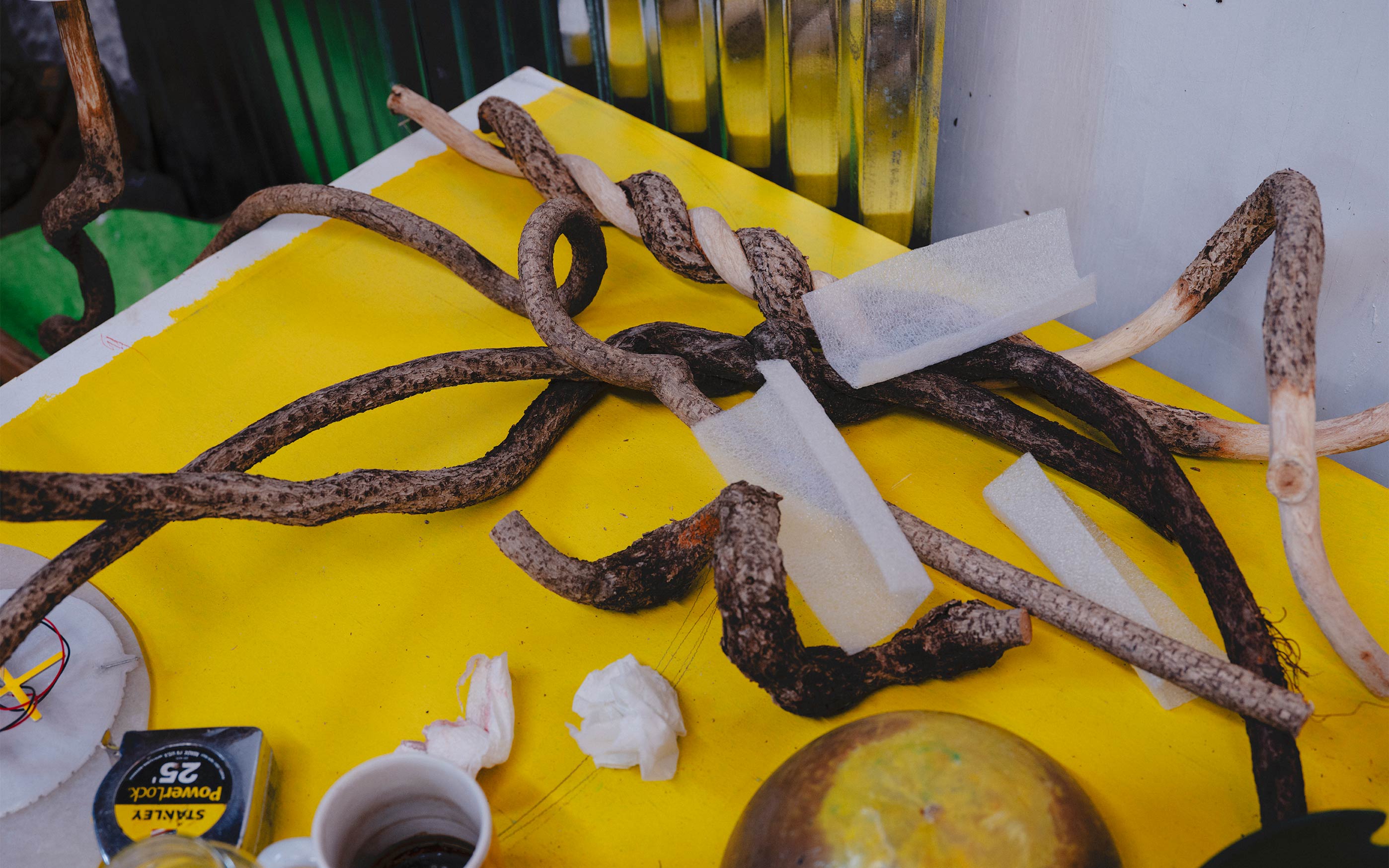
When you start a work – what comes first?
Basically, I think the work is there already, out in the world. But I might see something in the outside world which resonates deeply with that I am feeling inside. And this will become my work.
Can you give me an example?
For instance, I did this video where I put cultured pearls in relation to other things, called NoNoseKnows. Its subject is a system that extracts wealth from natural resources and labouring bodies. It brings together two sites: an enormous pearl-making facility in Zhuji, China, and a custom-designed set in New York. It started because I saw a program on TV about cultured pearls. And this set a whole mode of thinking into motion. My work is about connections between the mechanical, the synthetic and the organic, it is about this acceleration of natural processes. So I thought about the cultured pearl, that it is organic in a way but at the same time also men made - or rather woman made - and that made it click and out came the work. I tend to generate ideas through materials and shapes and relationships about things.
So your work is about combinations?
Yes. Generally, I can say that my works are always a combination of something primal, internal and something external that mirrors it; and in its wake creates a new connection.
How do you keep track all these connections? In your head? Or in a folder?
If it’s a good idea I don’t need to write it down, it will just stick in my head. But let’s see how I feel about that in ten years (laughs)! But if the idea is there in your head, you just know it.
How do you get your ideas across?
Well, I write them down, I sketch them. And then, I like having a conversation about them, because it concentrates on the idea. And this non-material thought almost becomes a thing, just because another person is listening to it.
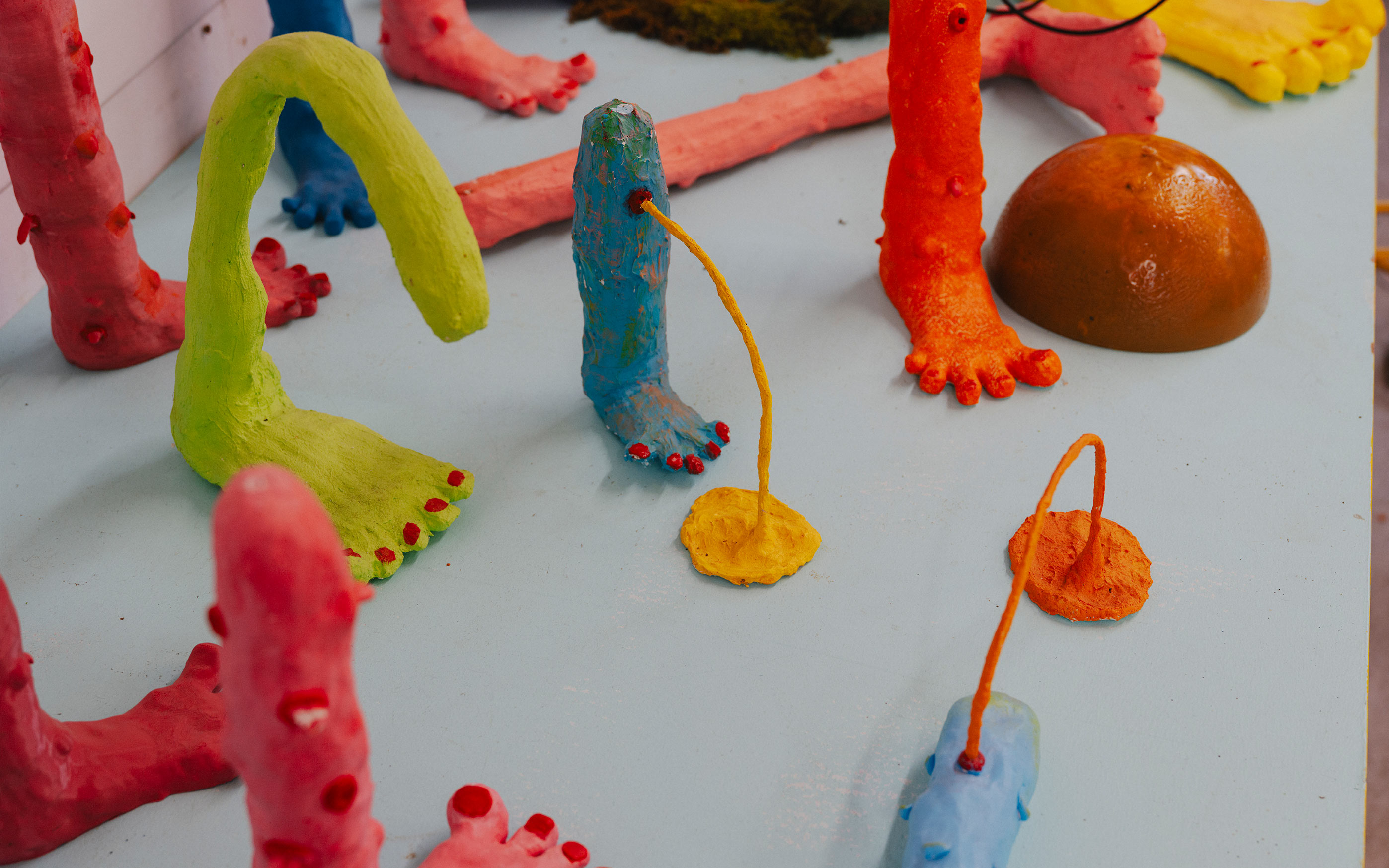
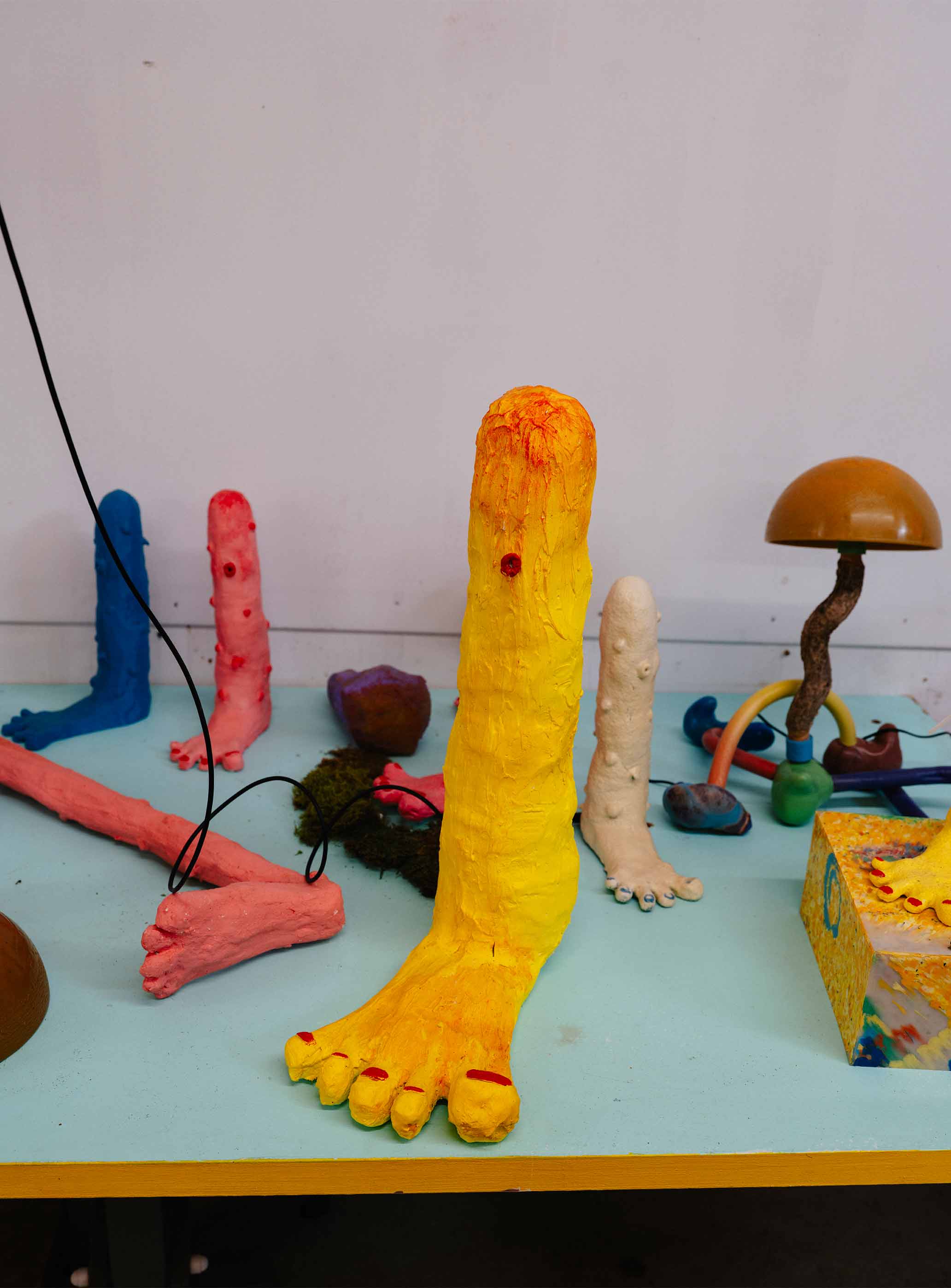
The idea that becomes a thing…
Anything in the world is an idea that becomes a thing!
I have read that you have a theoretical background on capitalism and other theories…
Not true!
Thank you for saying that, because I could not feel it in your work!
My work comes from a more primal place. What interests me is the intellect and the knowledge and theories of people that I can be in dialogue with. I don’t necessarily think that somebody else knows more than me. That might sound arrogant, but my work is just more experimental: it is about how you experience the world and relationships, it relates to different materials, people and products and also to big, oppressive systems. And nobody knows better than me what my thoughts are on these subjects!
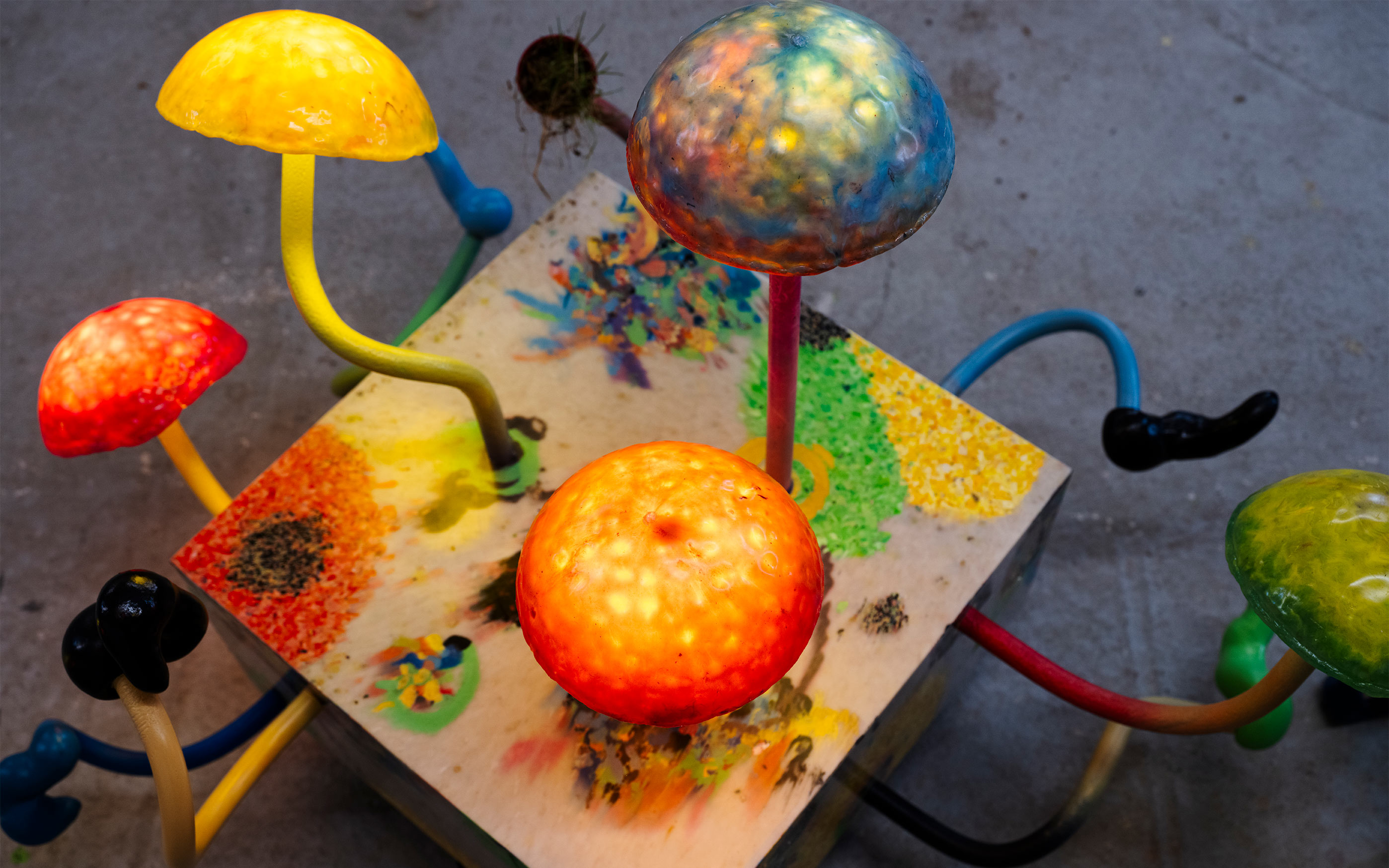
You feel you don’t need theoretical input then?
Well, Marx wrote about labour and materials, but I don’t think that he knows better than me about how it feels to consume something that was made in another part of the world, and has travelled so much, has been handled by so many people. And then for this thing to end up in my mouth and my body: I find that a very intimate relationship. So there is no external theory that I use. However, it is intimidating to assume I know things…
Is that not something people expect from an artist?
I’m not sure. The more we know, the more we know we don’t know. Everything is about the experiment and the way you see things, and what kind of experience and knowledge you gain from it. I think knowledge is very dynamic. But once in a while I might find a new kind of conceptual framework that I really relate to, because it articulates the things that I am thinking about in words. It might add something to the idea of my work. I like that connection: from a written essay to a visual one.
Is there a certain way you want people to read your work?
Not at all. If anything upsets me, it is a single minded read of what I do. I am interested in different points of view, or lenses, as I like to call them. A feminist one, an anticapitalist one, a socialist one, a capitalist one... I reject any lenses which exclude other ones. And I don’t think it matters what I originally thought about my work if my idea is the same than yours or not. There is no hierarchy.
Talking about different lenses: You mix up those up in your work too – is that what makes your work unique?
Yes. I think the idea is more interesting if there are two or three different ways to look at it.
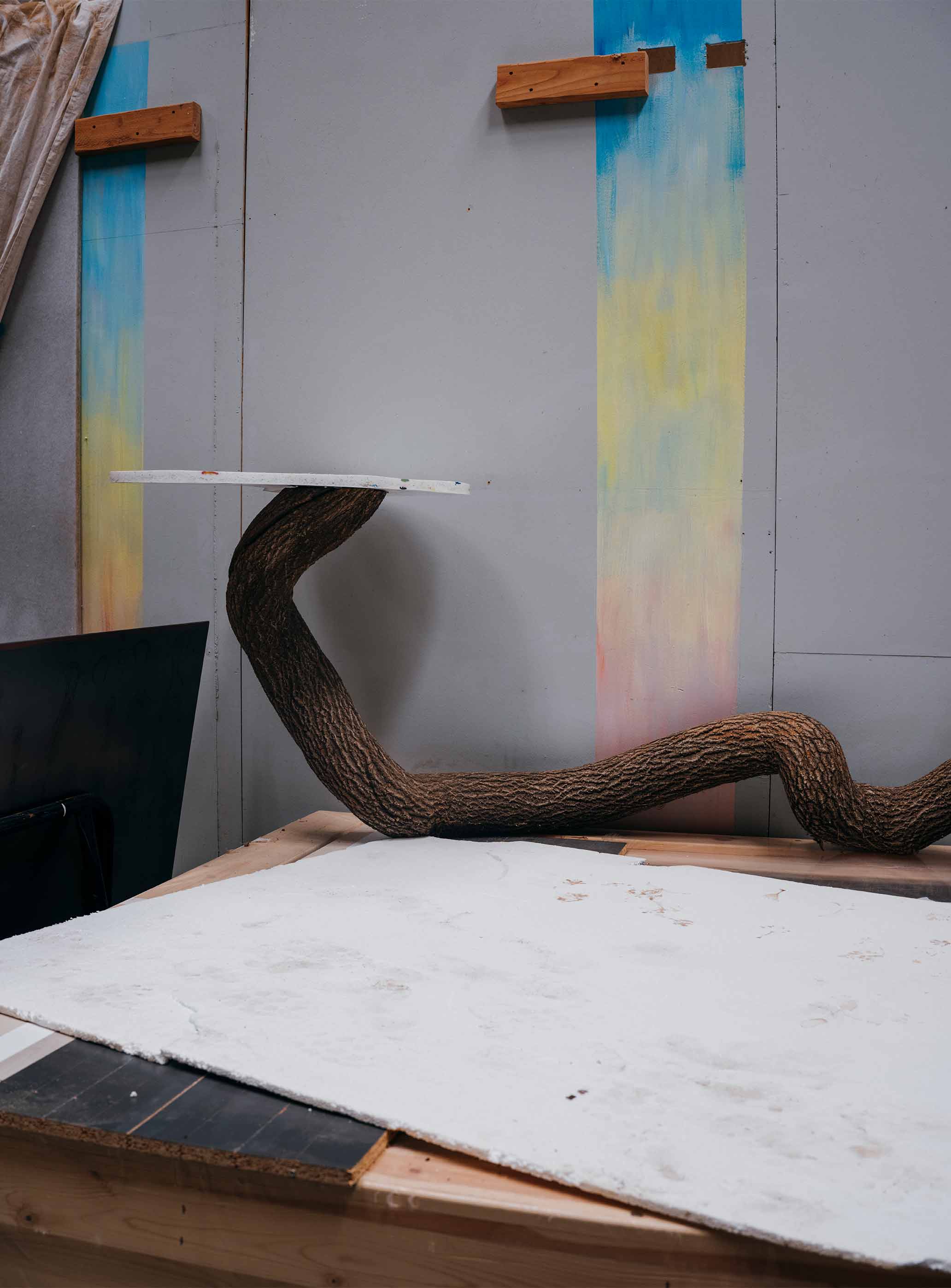
Another work of yours is “Cheese”, a story about long-haired American sisters from the late 1800s, who grew their hair long and marketed a new shampoo, which made them millionaires. How do you find these stories?
On the internet, of course (laughs). I was reading about long hair, and thinking about how fragmented personal space is. When I look at myself, I am always in my own perception, so it is obviously not a wholesome view. This idea of hair or nails goes beyond your body: these are bits you can cut, and they become like a mediator between you and the outside space; like an in-between space really. The idea of growing hair feels like a way to extend yourself…
Extending yourself through something that does not live, like hair or nails?
That is an idea that intrigues me. I became interested in particle physics, or even spiritual thinking: the idea that everything is moving all the time. I don’t think there is anything that is inanimate…
In your work at least, nothing is!
But also in physics. Everything is always moving. And that is interesting when you think about art. Because art is supposed to be more than what it is. It is not about the object, but about the relationship to the object.
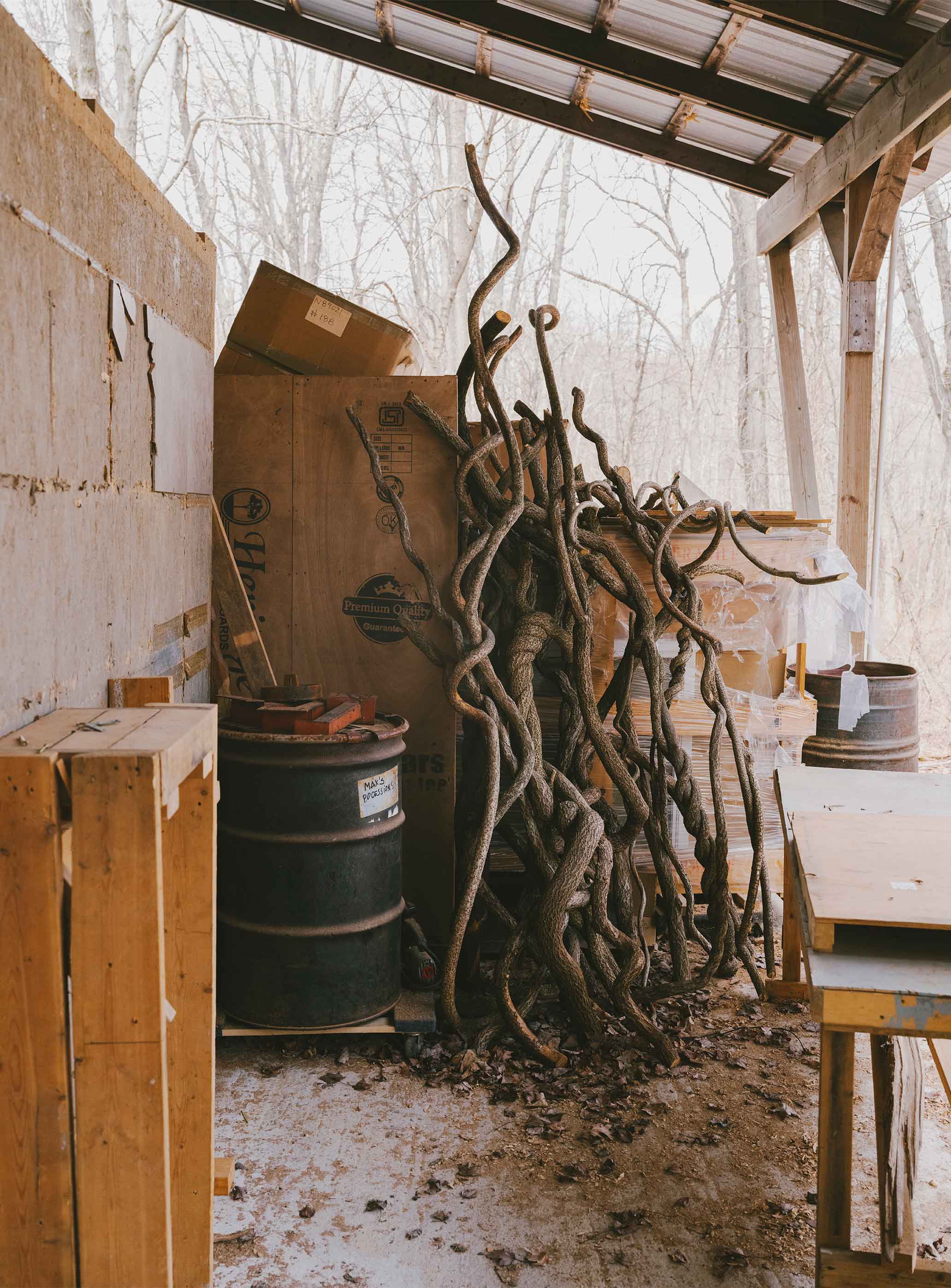
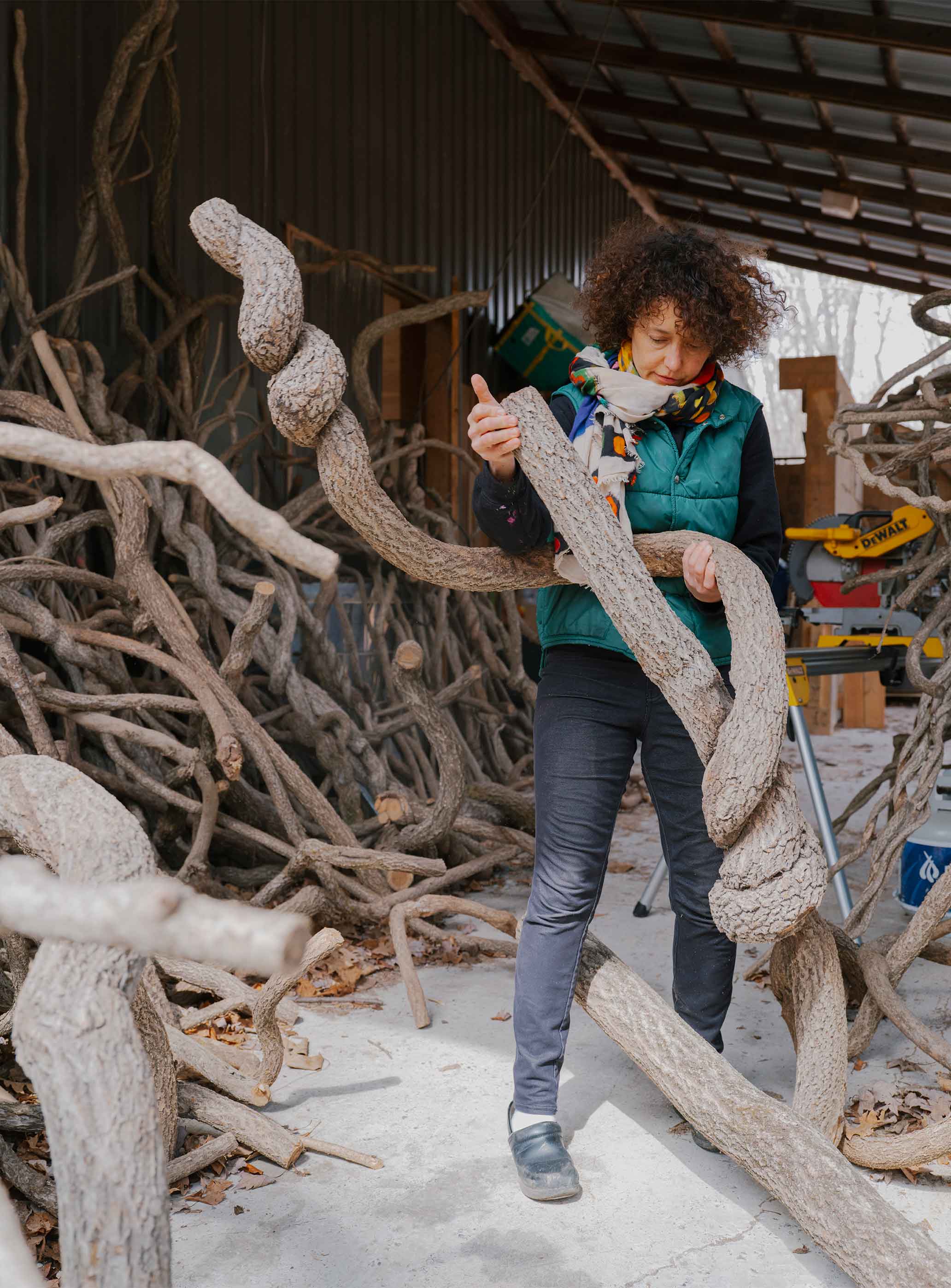
There is a work of yours called Sneeze. I read about your obsession with allergies – is there anything to it?
(Laughs). I would not call it an obsession really, to me it is more like an interesting mistake from the body, which is not necessarily bad.
But it is a vehicle for this work - how did you come up with the idea of a man sneezing out bunnies?
Maybe because I’m allergic to bunnies (laughs)! And I was pregnant at the time, and everybody kept asking me why there were always so many women in my work… Which led me to do a work about men making things out of their bodies.
We might say that everything in your work is bit “weird” - which is exactly the state of our world today; and getting weirder by the minute… Can art catch up at all?
For me, there has been a shift since the first Trump administration in 2016; I felt it as a rupture of values. Before, there always seemed to be some kind of agreement; artists and writers deal in fiction, and politicians in “truth”. But suddenly, everything became a spectacle. Everything was turned into what I call a mixed salad, with no clear line between fact and fiction. It changed the way I think, and I started making more fictional work.
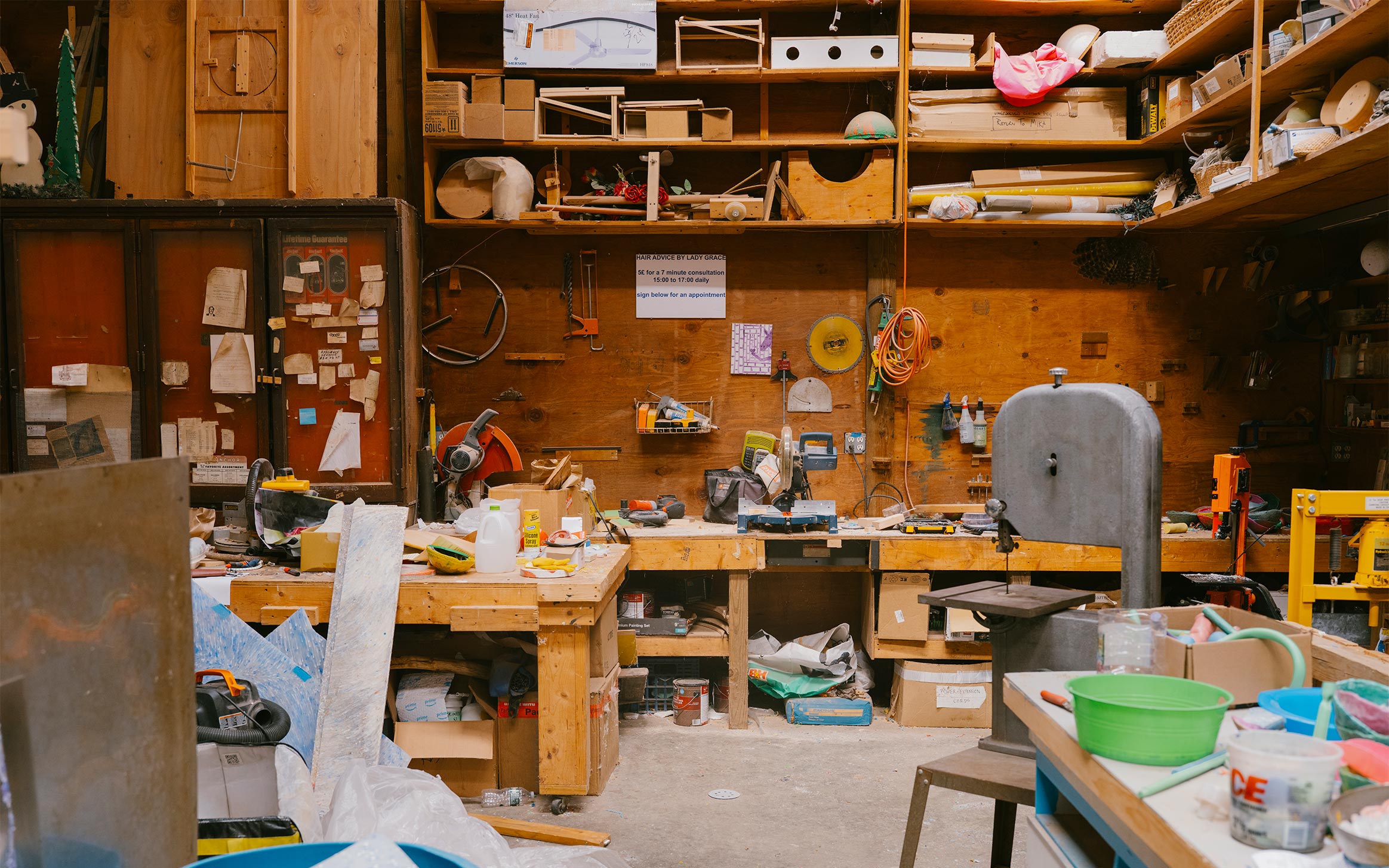
Where does that leave artists in general?
Regarding myself, I am tired of criticizing everything from outside. For artists now, it is interesting to find new ways of making stuff, of thinking, of being in the world.
Does art need tough times to flourish?
I think art turns more conservative in tough times, which is unfortunate.
Because artists need to survive?
Because lots of things are confusing. You allow yourself less risks, and you can see that in the art that is being produced, in the painting and sculptures. At times of unrest, people don’t take risks because they are scared. Maybe because everything is shaky outside, you don’t want to cause irritation.
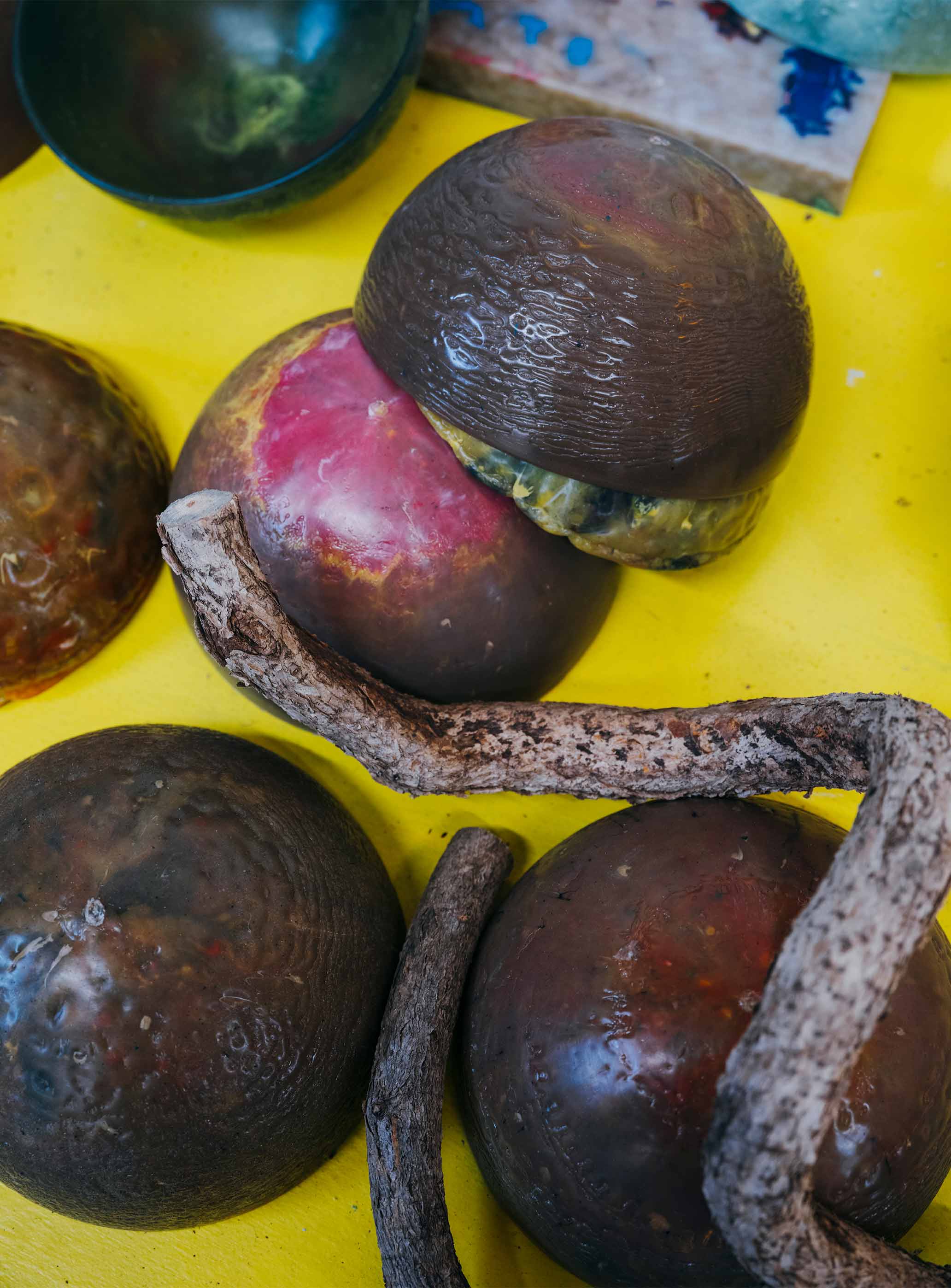
But you still do look for irritation, right?
Well, I definitely liked the idea of an allergy as an irritant. Of course, humans are irritants to nature. We are almost like nature’s own allergy! But to irritate people can close them off too. My work is more about seduction and repulsion, about something that could look bright and inviting, but then you discover it isn’t.
This sounds like a description of your videos! Do you like juxtaposing dark and light?
Yes. Because life is never one or the other. There is playfulness even in the darkest things. But if something is too dark and real, I wouldn’t make work about it. Not like comedians who tell jokes about current events.
Don’t you do the same too?
Maybe. But I’m not as quick! And there are certain things I wouldn’t do, because I need time to reflect. Even in NoNoseKnows, I would not have shown someone doing a work that is really toxic and then follow it up by something fun - that would be crossing a line for me.
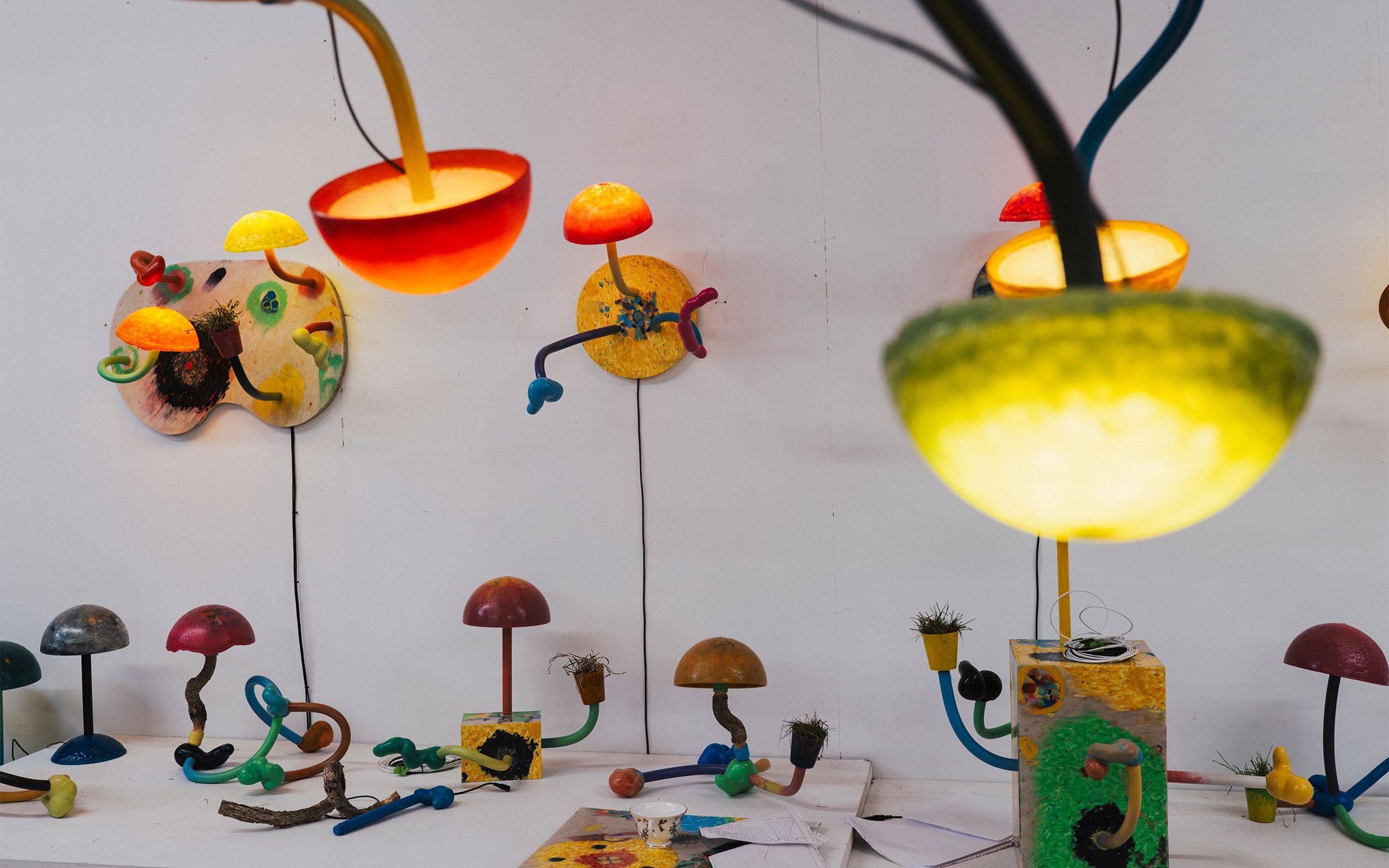
Is your work about tasteful contrast then?
Yes. I don’t want to be provocative just for the sake of it. I like it when things are in between, when you don’t know whether they are horrible or beautiful. Then it’s interesting, and I might feel that I could engage with it.
So what should art do in our times?
I think innovate! Just invent different ways of making things. I am not talking about finding solutions – that is a job for engineers or such. I am talking about really thinking, really trying and inventing another system. There is a lot to be said about reflecting on reality in a grotesque way.
Which is a good description of your work! So art does do something!
Yes, and hopefully it creates beauty. I mean, what does beauty mean today? If something looks beautiful but is made in ugly ways - is it still beautiful? There is not one answer. And that dissonance is interesting to look at.
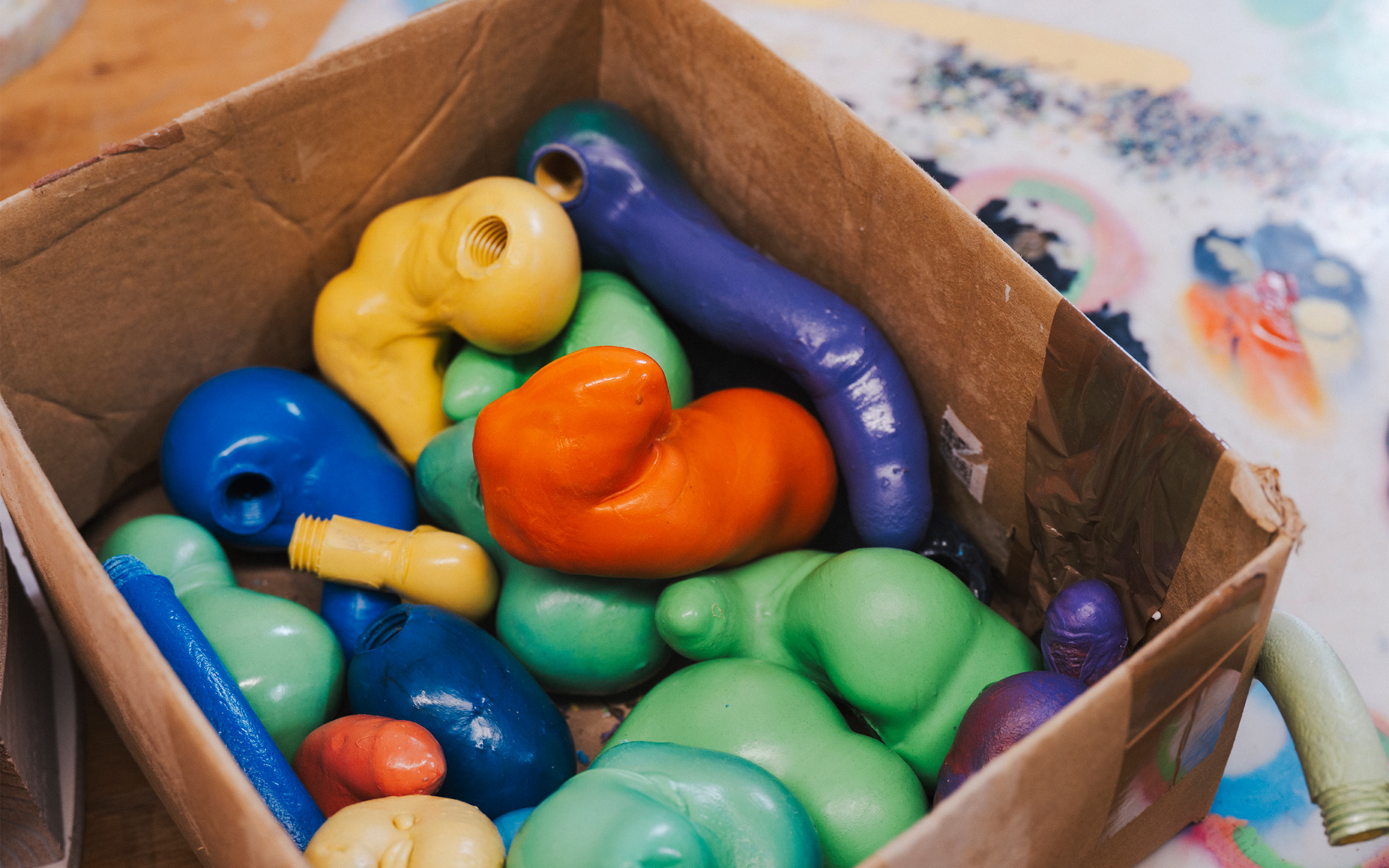
Do you follow a red thread in your work?
Yes, because each piece leads to the next. There is a conclusion to a work that sparks the beginning of the next. I definitely think there is a narrative. It is there if you look for it.
You live in New York now, but you still travel a lot?
I try. I show my work a lot in Europe but less so in the US. I actually do the opposite of what would be sensible: it would be better to live in Europe and show work in the US!
The fact that you are well traveled plays into your art. Do you feel that seeing many things makes it easier to connect them?
Yes. My work has a lot to do with the fact that I don’t feel really attached to any nationality, I don’t feel that I have a place. I was born in Argentina, grew up in Israel, moved to the States, then Spain, then back to NY…
This feeling of not belonging comes up in your work, too…
I think in my work there are a lot of questions about the connection to a place and what that special place might be. Is it a land, is it your body, is it the particles in your body – what is that kind of connection? I am questioning the ownership of the body and the land.
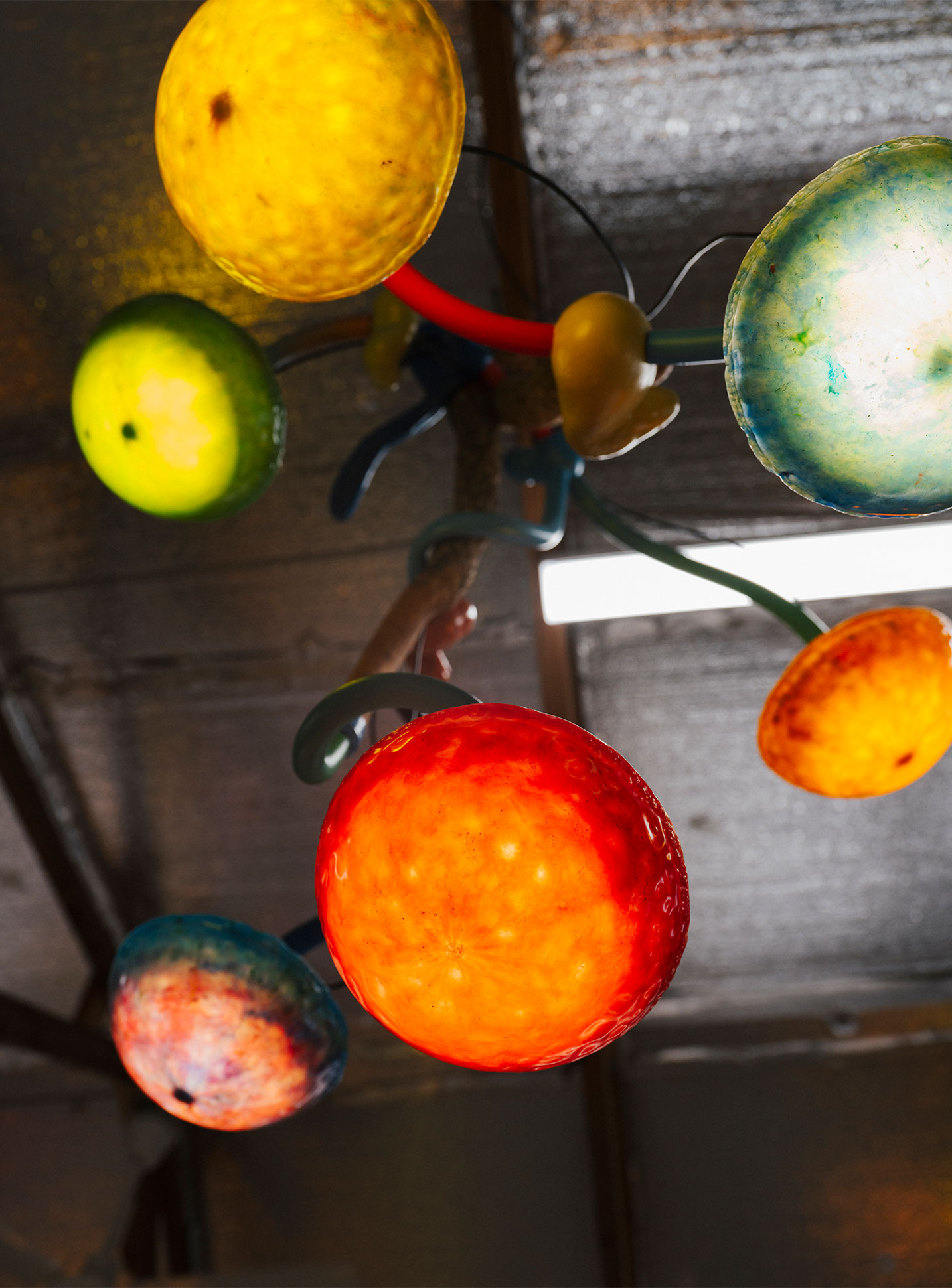
Talking about the land – you have moved recently…
Not recently, in fact over ten years ago I moved to the forest. For the first time I feel connected to a place, not in a nationalist way, but I feel like a guardian of the place. I wanted a quiet place…
Maybe because there is a lot of noise in your videos?
Well there is a lot of noise in the forest, too (laughs)! My neighbors blow around the leaves with a loud machine, and that drives me crazy.
The whole situation sounds like it came straight out of one of your videos!
Well yes. Sometimes I feel that I should put the leaves back to where they came from, because I find there is no reason for them to be collected and to be put in trash bags. The leaves belong under the tree and not in the garbage!
That sounds like it could be the start of a new work?
(Laughs) I think David Lynch did that already.
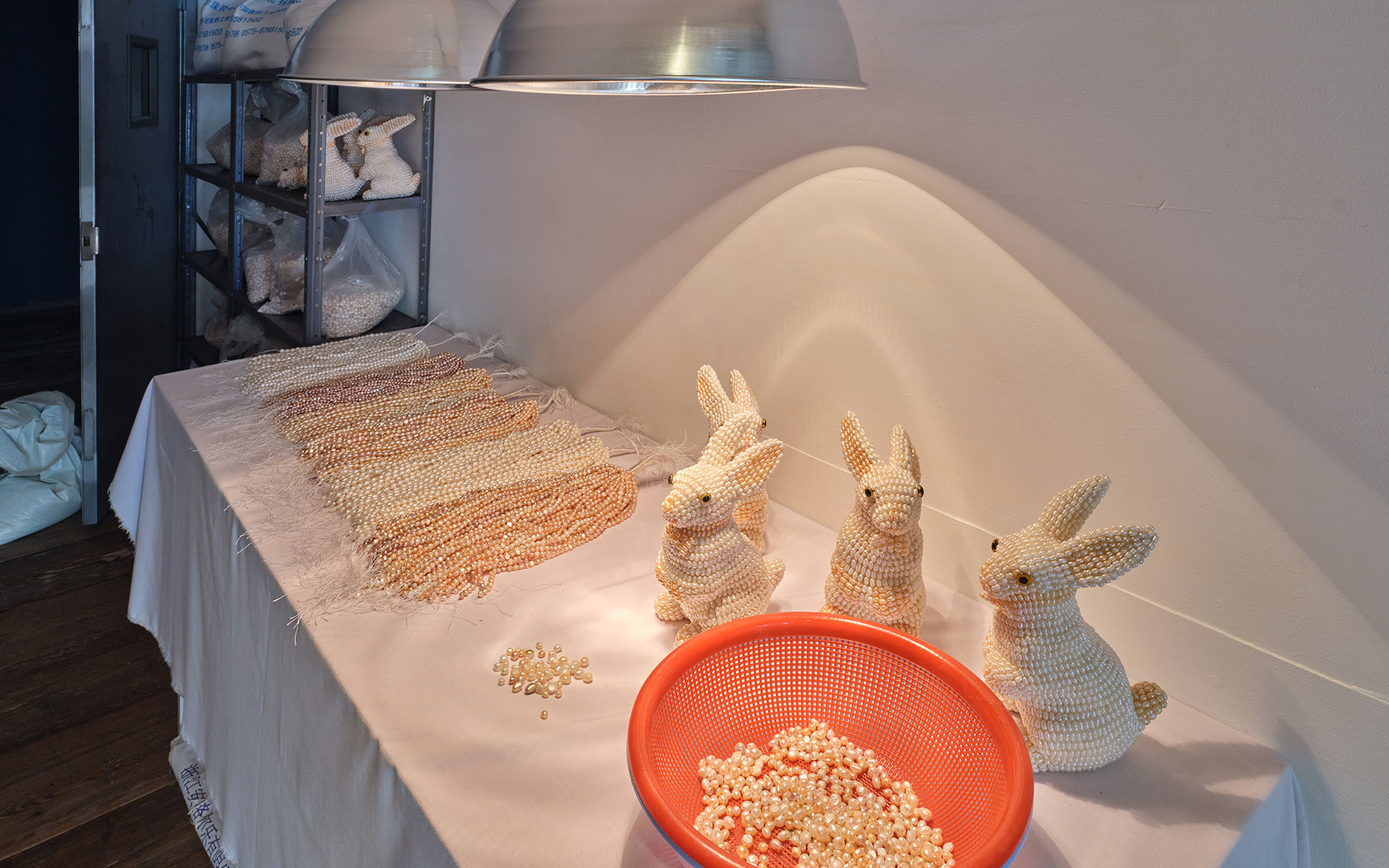
© NoNoseKnows, Mika Rottenberg. Antimatter Factory, KunstHausWien, Foto: Michael Goldgruber
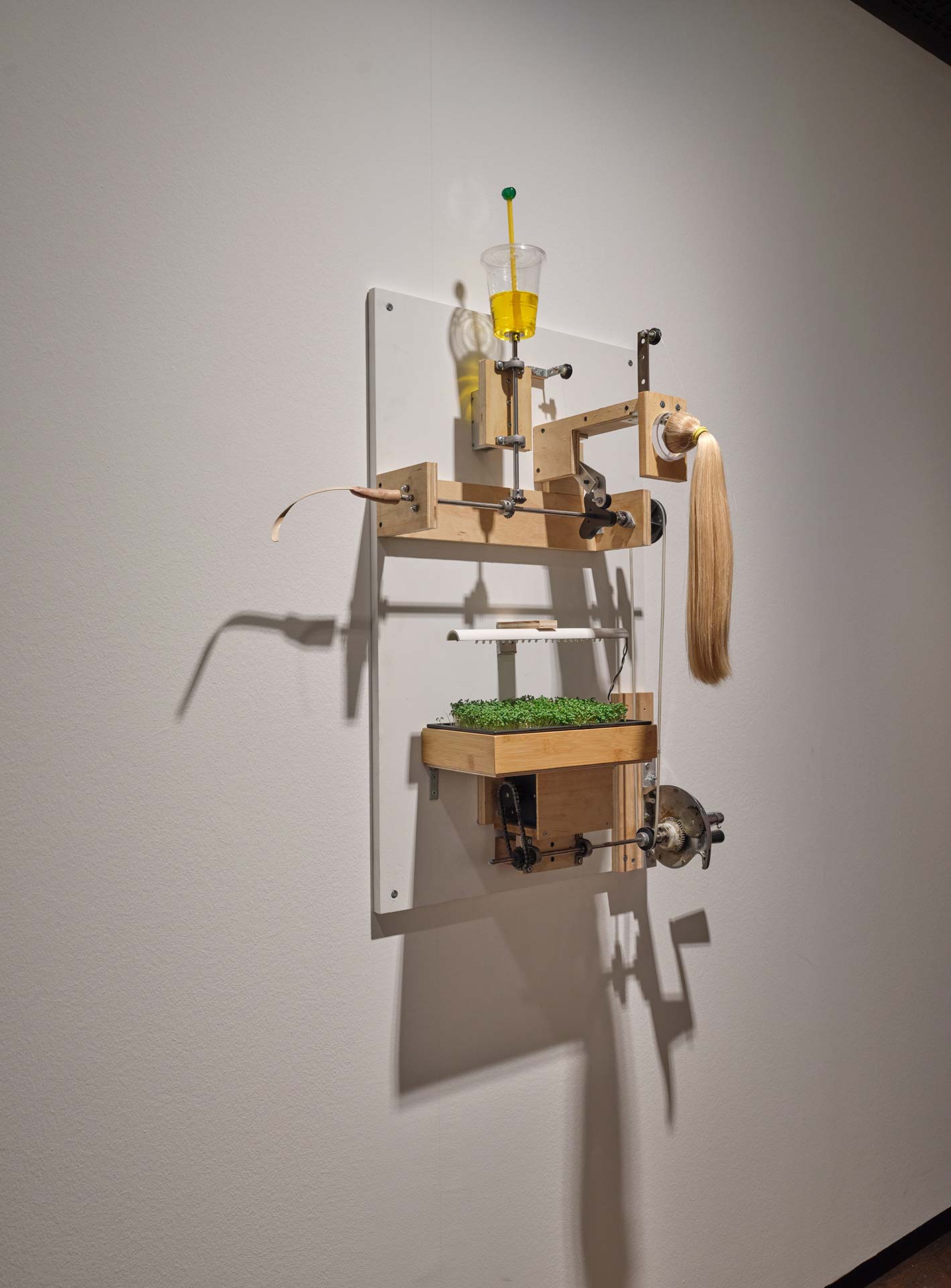
#2 with Salad, Mika Rottenberg. Antimatter Factory, KunstHausWien, Foto: Michael Goldgruber
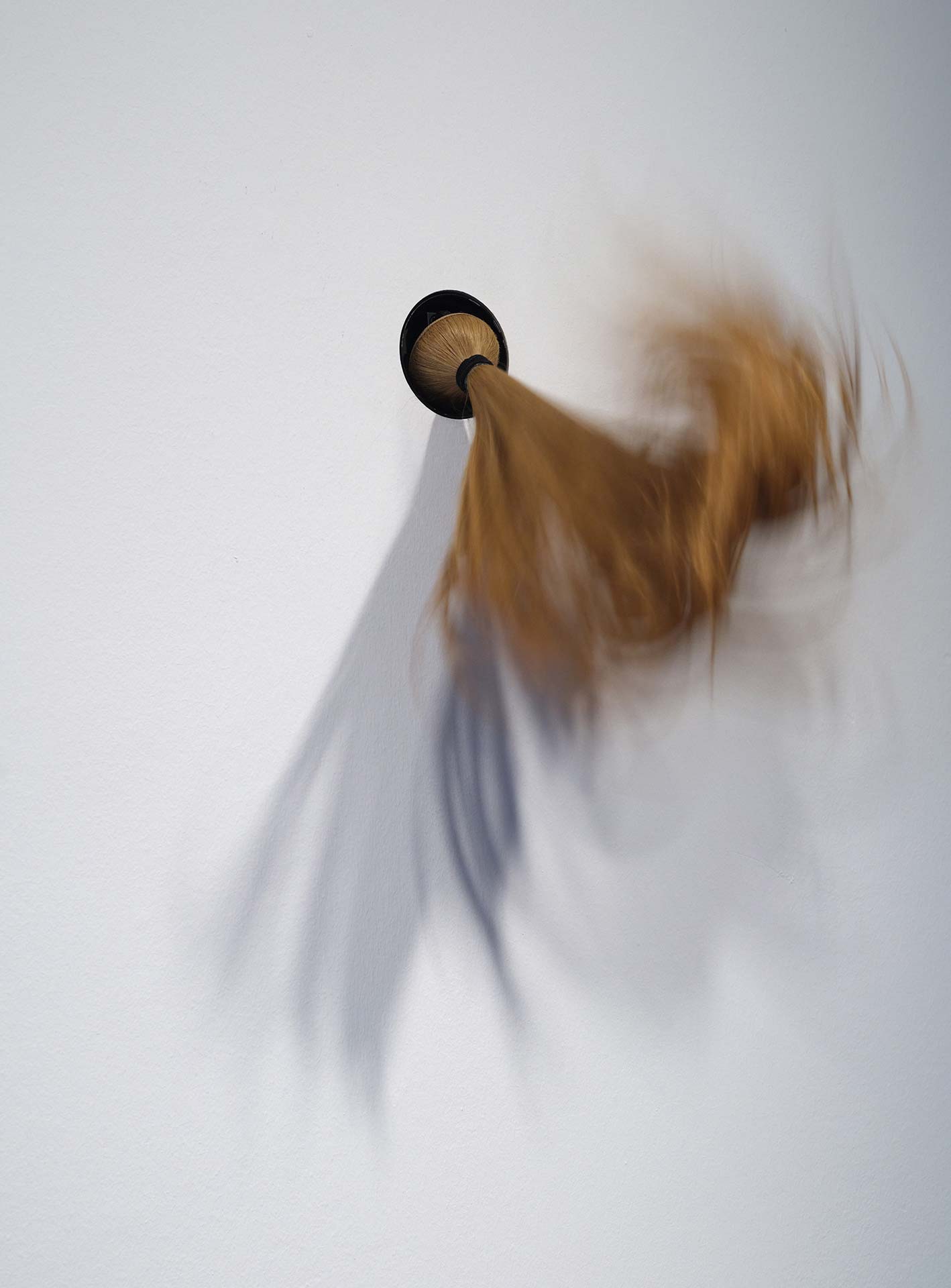
© Ponytail (honey blonde), Mika Rottenberg. Antimatter Factory, KunstHausWien, Foto: Michael Goldgruber
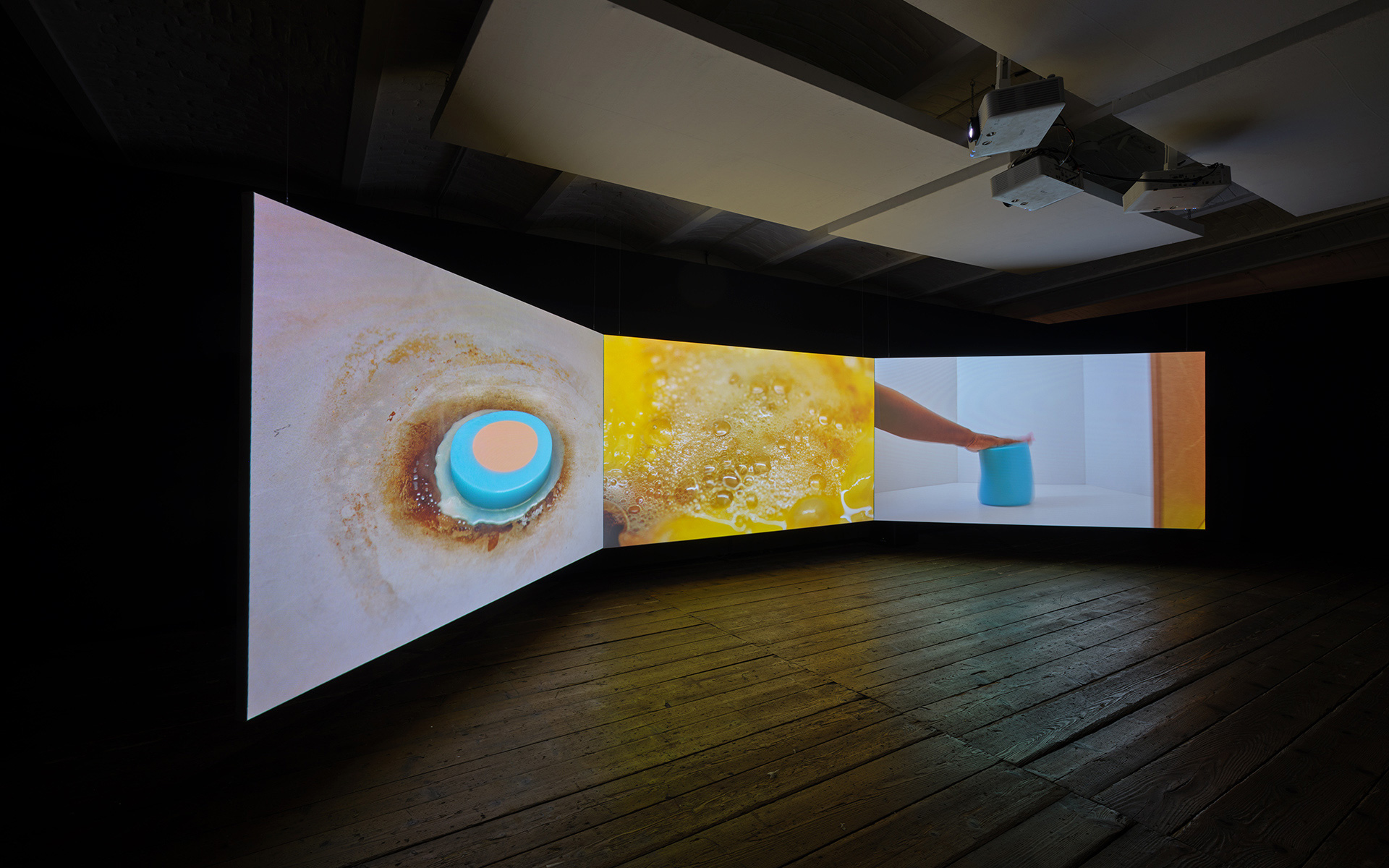
© Spaghetti Blockchain, Mika Rottenberg. Antimatter Factory, KunstHausWien, Foto: Michael Goldgruber
Interview: Alexandra Markl
Photos: Katharina Poblotzki


